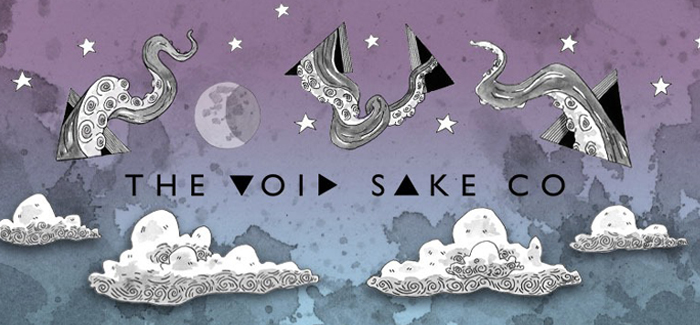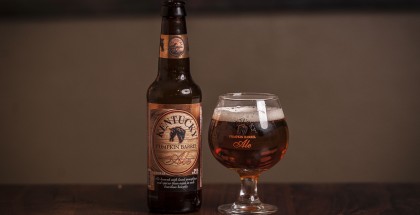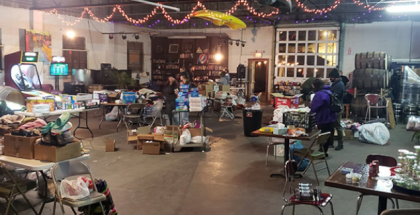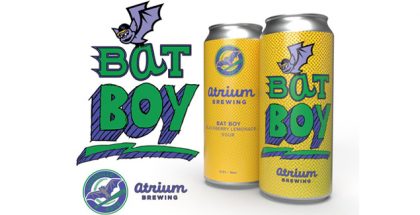Kentucky’s First Sake Company to Open Mid-Spring
Most people’s experience with sake is at the Hibachi grill when the chef sprays it into your mouth from three feet away. You either nail it or you leave the restaurant with sake all over your shirt. That’s the extent of your knowledge of the Japanese rice fermented alcoholic beverage. The Void Sake Company in Lexington, KY is ready to change people’s perception of sake and that it’s more than just a fun part of your Hibachi dinner.
The first way to do that is by understanding exactly what sake is. Sake is a fermented alcoholic beverage that is brewed with rice, water, Koji and yeast. Sake is often referred to as rice wine because of its high alcohol by volume (ABV). Most sakes range from 10 to 20 percent. The main component that sets sake apart from other alcoholic beverages is the Koji. Koji is a mold that’s cultivated on the rice that breaks down the starches for the yeast to convert to alcohol.
Sake is served in an o-choko or choko glass and can be served at either room temperature or warm. It is traditional to pour the sake into your guest’s glass with two hands.
The Void Sake Company joins a small list of craft sake companies in the United States and the first in Kentucky.
“I think that it just gives us the chance to kind of stand out from you know, traditional beer and bourbon because even though that’s what Kentucky is known for, we’re gonna kind of put a spin on that and make a name for a sake at the same time,” Joe Rice, co-founder of The Void Sake Company, said.
View this post on Instagram
The three founders Brandon Floan, Joe Rice and Justin LeVaughn all have experience working at a craft brewery and plan to bring that experience to their craft sake company.
“I think that we’re going to take our background in craft beer and kind of put that craft beer twist on things and open up the palette for those that want to try it and those that aren’t familiar with it,” Rice said. “Those that have just experienced it as getting a squirt in the mouth at the hibachi place, which we’ve all done, we want to take that idea and kind of pull you away from that. We wanted to focus on the product more than the experience and then turn that experience, and at the same time producing a quality craft product that no one else is doing anywhere else.”
“We have the inspiration from craft beer because it is such a small community,” Floan said. “There are 20 craft sake breweries, none of them have a background in craft beer. So I feel like we’re gonna bring quite a bit of different stuff to the game in that regard.”
Although the process of making sake is different from beer, the experience of working at a craft brewery will help the three in a different way.
“I’d say the biggest things that helped us out, are the production and the manufacturing side of things,” LeVaughn said. “Because a lot of the equipment is not available here in the US, or we can get it but have to basically ship it from Japan. So we have been able to streamline our manufacturing process to help us make better sake. And, then we also are using our knowledge of what craft drinkers like and how we can use that knowledge and play with different flavors to cater to as many people as we can.”
“Ultimately we want to bring people to sake and educate them on not just what it is, but what it can be. And yeah, so those types of experiences from the craft beer and beverage world will help us in that regard,” LeVaughn said.”
How did three Kentuckians get into sake? It started with Lexington Craft Beer Week in May 2018 when the three decided to showcase their love for Japanese culture and cuisine. For the celebratory week of beer releases, Ethereal Brewing decided to brew several small-batch beers with Japanese flavor profiles. The Trials of Yamamoto included six Japanese inspired beers: Akkorokamui (Wheat Beer with Fruit and Cephalopod Ink), Amazake-babaa (Saison with Koji Rice), Chōchinbi “Imperial Rice Lager with Sorachi Ace), Azukitogi (Imperial Stout with Anko and Plum), Umibozu (Gose with Seaweed, Sea Salt, and Citrus and Kodama (Tart IPA with Green Tea).
“Brandon was like, learn how to grow Koji,” LeVaughn said. “So then we played around with it, and then we just kind of fell in love with it basically. We’re cultivating this, this new and strange organism to use in our brewhouse, and we just kind of fell in love with it. The three of us love a lot of ramen and a lot of Japanese cuisines, so that’s where it all started.”

After they started growing their own Koji, the three were captivated. Not only was the mold intriguing to these beer brewers, but especially sake’s fermentation process and how different it is from beer.
“Sake is very unique in the fact that it’s called a parallel fermentation where, at the same time that it breaks down the rice, it also ferments the rice into an alcoholic product, which is very unique,” Rice said. “As far as fermentation goes, it’s unlike any other type of beverage in the world that does fermentation. So that parallel fermentation is something else that kind of grabs the attention because it’s very unique.”
This led to the three making their own batches of sake at home. They quickly realized they were pretty good at it too.
“We were like, this is actually pretty good,” Floan said. “This is better than some of the stuff that you know, you get at the hibachi, or sake bar.”
Floan, Rice and LeVaughn and The Void Sake Company plan to start sharing their craft sake with the public in mid-Spring. To follow their progress and check for updates, visit thevoidsake.com.









Submit a Comment